

![]() Why do I always start with a comment on the weather? It is obvious; all our lives are governed by it, we are either happy or miserable because of it, and for the farming fraternity, it is often a 'make or break' scenario.
Why do I always start with a comment on the weather? It is obvious; all our lives are governed by it, we are either happy or miserable because of it, and for the farming fraternity, it is often a 'make or break' scenario.
After last week when we all enjoyed a very warm and sunny Bank Holiday Monday, Tuesday was also very warm; Wednesday mainly dry (in the South) but decidedly colder. The blossom period; delayed for all fruit species seemed to be back on track last week, but as we pass the middle of May some areas are still not fully at the full bloom stage. Of course the stage at which each variety reaches full bloom varies as much as the regional variations. Egremont Russet is at the petal fall stage. Braeburn is at or close to full bloom, while Gala is appears to be a day or two behind. The forecast (in the South) suggests a few warmer days form Monday, so by next Friday (24th May) we can expect all apples to be at petal fall, or early fruitlet stage.
What is very clear this season is the abundance of blossom on all varieties; 'maybe less abundant in some Gala orchards, but plenty for a full crop. In fact that may be beneficial as too much blossom will result in an 'overset' and the less well endowed may be perfect. Thinning is not an easy decision for growers; with an uncertain weather projection, it is easy to be tempted to wait until the crop potential is easier to assess, however if by early June we find the trees overloaded with fruitlets, the cost of hand thinning will be very costly.
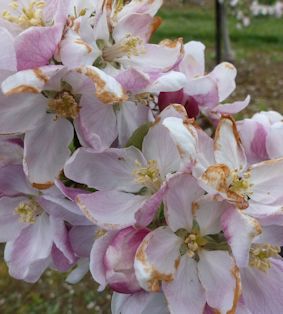 One measure that growers can (and do) use on varieties with an inherent ability to set a lot of fruit; e.g. Gala & Braeburn is the use of ATS (Sulphur) which when applied as a spray to apples at full bloom damages flower parts, reducing potential crop set.
One measure that growers can (and do) use on varieties with an inherent ability to set a lot of fruit; e.g. Gala & Braeburn is the use of ATS (Sulphur) which when applied as a spray to apples at full bloom damages flower parts, reducing potential crop set.
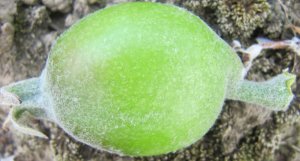 By applying it at strategic stages of bloom we can influence the flowers which can deliver the best apples and by definition remove the ones likely to produce small or poor quality fruit.. It may be an early application (when first flowers are out; these are the King Flowers which if retained develop into King Fruit with a dominant stalk end; e.g. a second class fruit.
By applying it at strategic stages of bloom we can influence the flowers which can deliver the best apples and by definition remove the ones likely to produce small or poor quality fruit.. It may be an early application (when first flowers are out; these are the King Flowers which if retained develop into King Fruit with a dominant stalk end; e.g. a second class fruit.
Equally effective can be the removal of flower from the blossom on one year old wood; assuming we can be confident of the best flower (middle order) setting, the removal of the later flowers will reduce the probability of undersized fruit.
At a farm walk yesterday (Thursday 16th May) it was interesting to hear the grower, Will Riccini expounding his management procedures. Will said he does not plant specific pollinators in his Gala orchards as he finds the fruitset sufficient without and will only require a modest level of hand thinning; by contrast, where he has Gala with extra pollinators, the set will be heavy and require 3 - 5 times the cost of thinning. He remarked that last season (a difficult one) was an exception to the rule, with a less than optimum crop, but over a 10 year period, managing a naturally high cropping variety without a specific pollinator in the orchard was the best option.
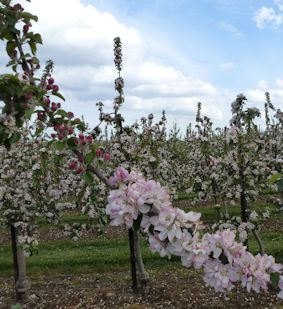
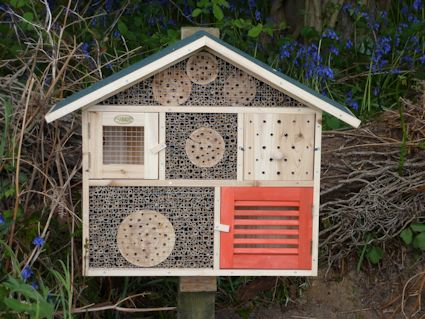
While in East Kent The English Apple Man managed to take some very nice pictures of orchards in bloom.
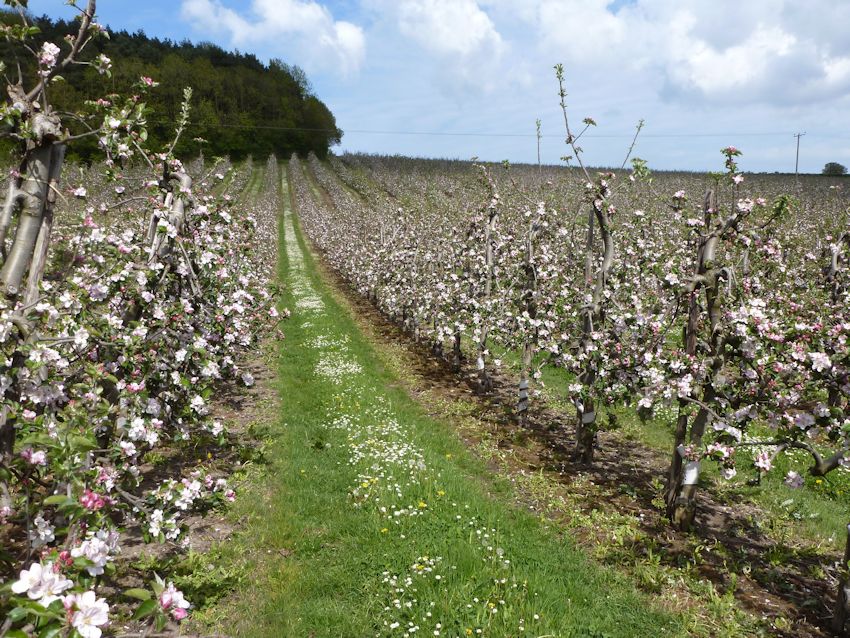
.jpg)
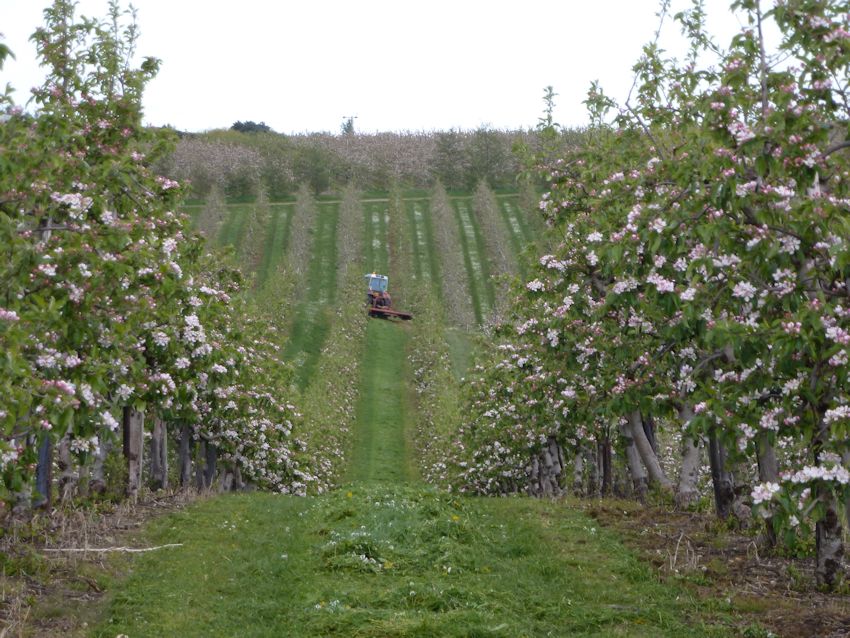
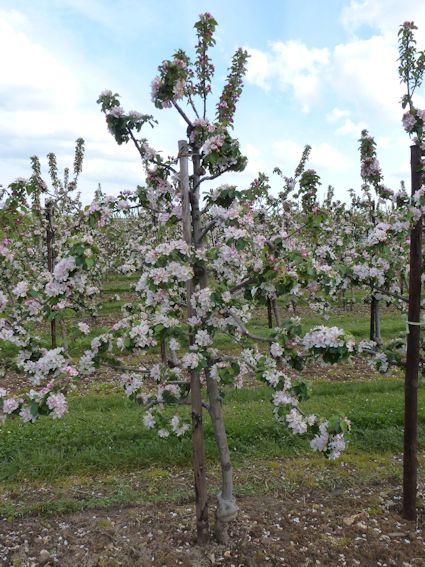
.jpg)
The technique of twisting the leader around the tree stake is a common practice when trees are at risk of showing to much vigour. In addition this process triggers the tree into making new breaks on the central leader; e.g. new buds form and and these will help furnish the tree with new fruiting laterals.
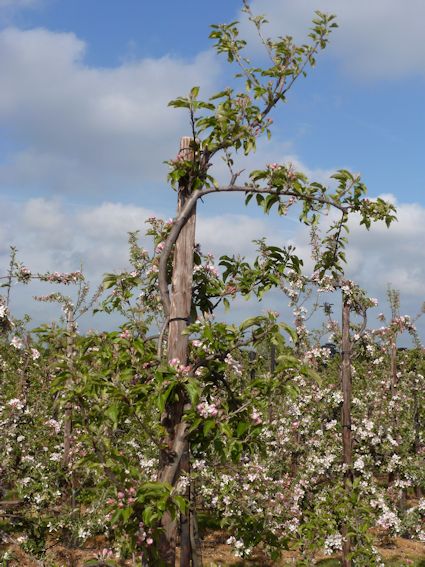
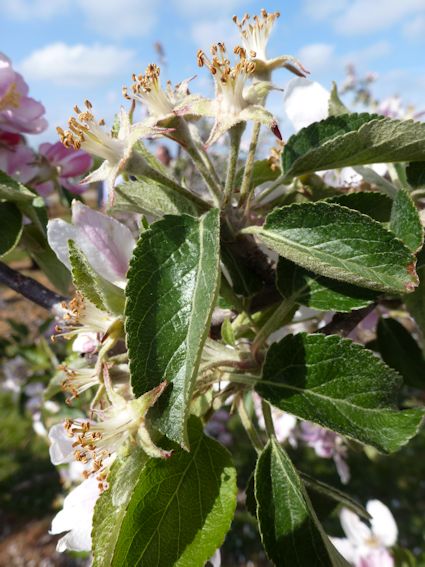
Last weekend The English Apple Man drove via the A1 to Derbyshire. This a fairly regular event as our daughter lives with her family there.
Leaving at 6am on Saturday morning we were blessed with dry weather (there I go again!) and light traffic. This enabled me to take note of the number of 'seedling' apple trees growing in the hedgerows. The initial source (pips) either deposited by birds or quite possibly by a discarded apple thrown from a car window, is a common event. On our journey we must have seen 30-40 of these trees; noticeable due to their abundant blossom. "Most of the year we would not notice them as they blend into the copious surrounding vegetation"
It set me thinking, and as I drove to Canterbury on Thursday at least another 20-30 seedling trees caught my eye. Just think how, many sit in hedges across the country; it must be thousands, and every one unique!
While many of these 'volunteer trees' will produce fruit of no appreciable quality, the 'the imagination runs wild' and there MUST be some potential new variety of considerable note, sitting ignominiously beside a 'dual carriageway' somewhere!
Below the Canterbury to London train flashes past a 'volunteer seedling apple tree along side the railway line
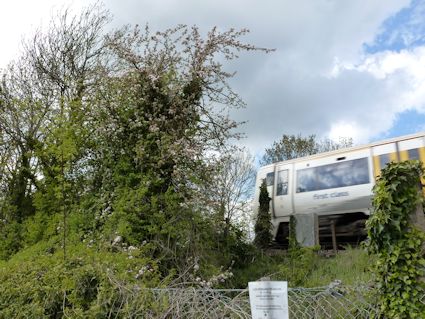

Thank you to Francis Wheatley for sending me pictures of the red fleshed variety REDLOVE, which brings a new apple blossom colour to our countryside; these are part of the 7,500 trees planted at East Malling Research in the spring of 2012.
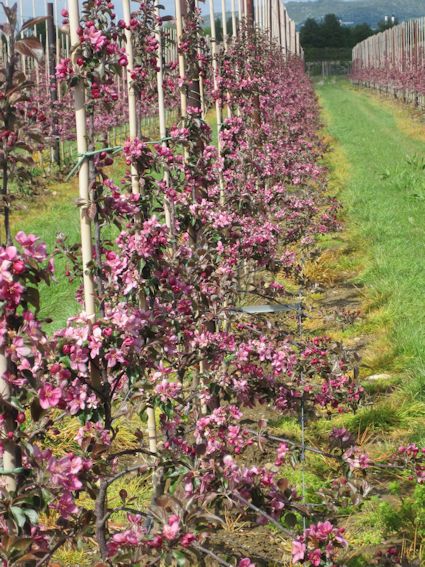
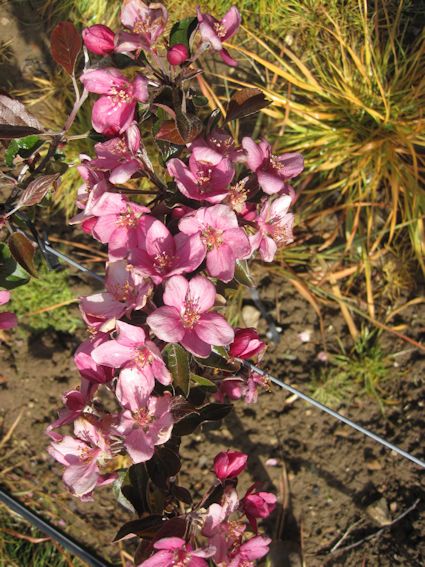
As we accustom ourselves to retail shelves devoid of English apples until the new season starts again in August; what apples does The English Apple Man eat?
I should say; apart from English Bramley (which should last into June) one can still find excellent English Conference pears; I have found them in Sainsburys, Waitrose and M&S this week!
My taste buds lead me to New Zealand apples; Cox, Gala, Jazz, Braeburn, all of excellent quality, and grown by 'our cousins down under'
NEWS FROM NEW ZEALAND!
This season, New Zealand's pipfruit producers will infuse global markets with increased tonnage for apples and pears.
"We anticipate our export volume to be just under 17 million cartons or just over 305,000 tons," Alan Pollard, chief executive officer of Pipfruit New Zealand Inc., told The Produce News. "This would represent an increase of 6 percent over 2012. Production acreage is approximately 1 percent more than in 2012."
The organization is comprised of growers, packers and marketers of apples and pears, and it identifies, undertakes and funds research and development on behalf of the industry; speaks on behalf of the industry; and facilitates workshops, conferences and dissemination of industry information.
Mr. Pollard provided a global snapshot of pipfruit exports for the 2012 crop year.
"In the 2012 season, almost 12 percent of apples and 31 percent of pears were exported to the United States," he said. "This placed the U.S. third behind the European Union and United Kingdom for apples and first for pears."
He added that collectively, Asia is now New Zealand's largest export destination for pipfruit.
Mr. Pollard said that the total area devoted to apple production is approximately 21,500 acres. Among apple varieties produced, Royal Gala accounts for 27 percent of production area followed by Braeburn at 17 percent. He said that Fuji and Jazz each account for 10 percent.
New Zealand's pipfruit growers also produce Pacific Rose, Pacific Queen, Cripps Pink and Pacific Beauty apple varieties.
Looking at pear production, Mr. Pollard said, "We expect to export about 245,000 cartons of pears. This is a 14 percent increase on 2012."
Pear varieties produced and marketed are Taylor's Gold, Packhams Triumph, Beurre Bosc and Doyenne du Comice. A number of varieties of Nashi -- known as Chinese pears -- are also grown and exported.
Asked what pipfruit growers anticipate in terms of product quality, Mr. Pollard replied, "Given a good summer, we are generally seeing high-quality fruit this year. It has generally been a very good growing season this year."
In a statement issued in February, Mr. Pollard said the largest percent of this year's export volume would come from Hawke's Bay, which is expected to supply 61 percent of the total pipfruit crop. Nelson was expected to export 31 percent, and Central Otago will account for 4 percent during 2013. The remaining regions will account for the balance of volume.
Source: The Produce News
![]() Finally - These magnificent Rhododendrons in Tunbridge Wells; just one of the many beautiful sights in our countryside at this time of year.
Finally - These magnificent Rhododendrons in Tunbridge Wells; just one of the many beautiful sights in our countryside at this time of year.
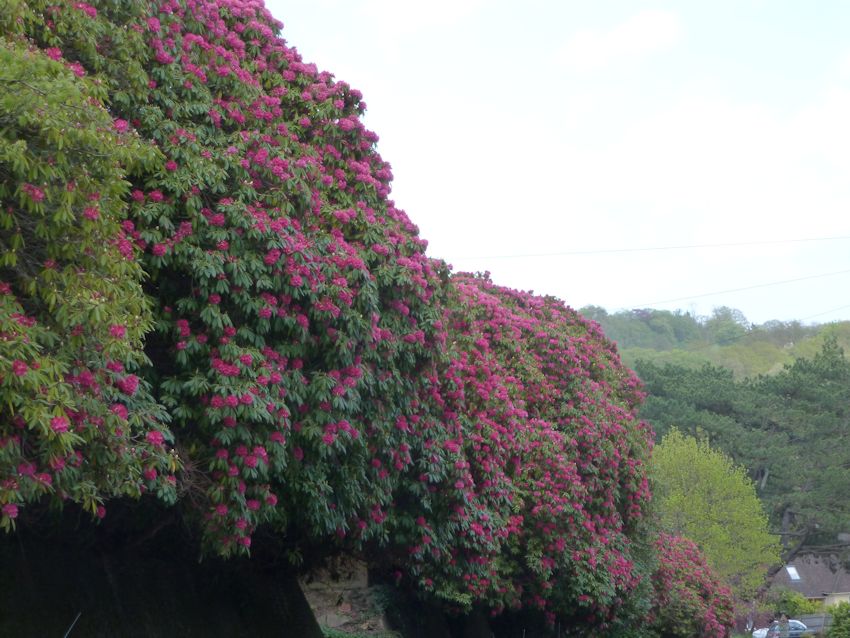
That will do for this week................
Take care
The English Apple Man